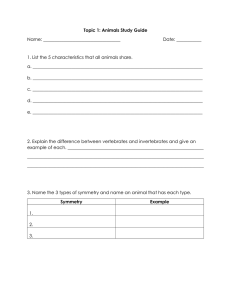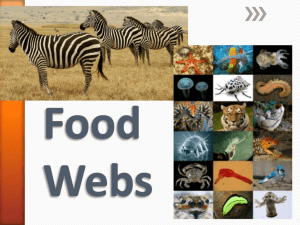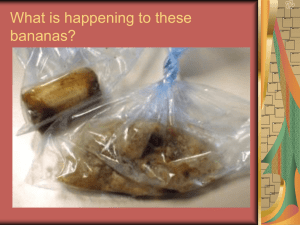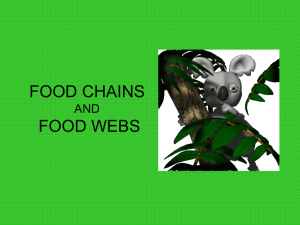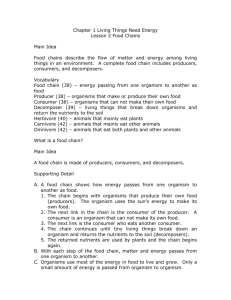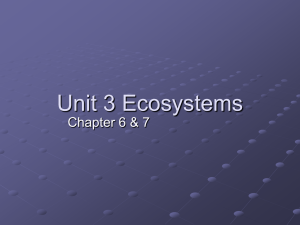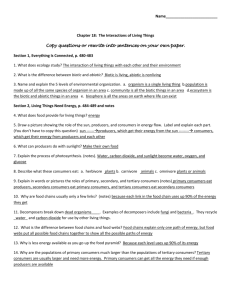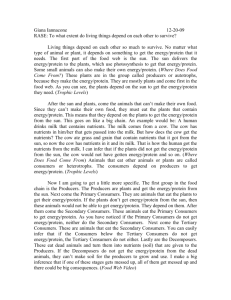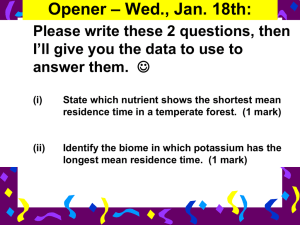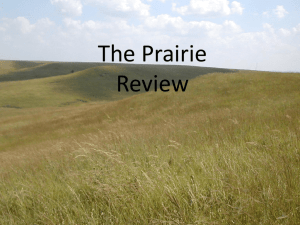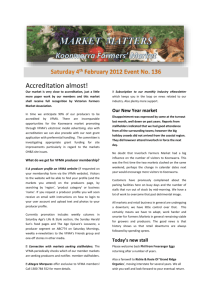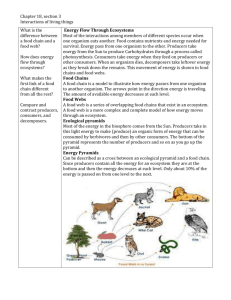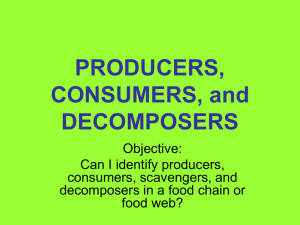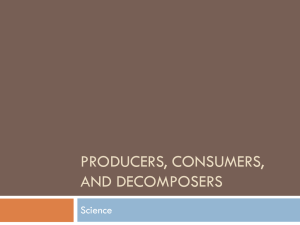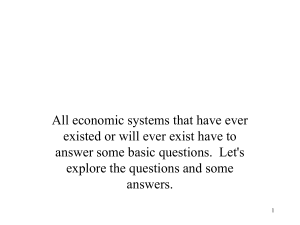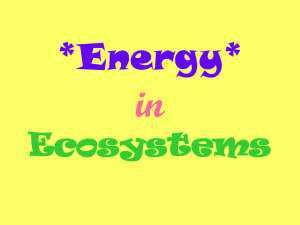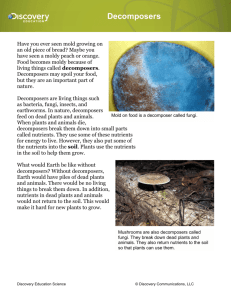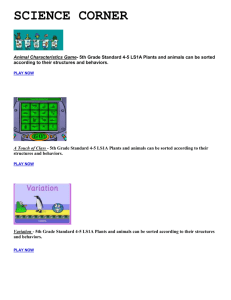Food Chain
advertisement
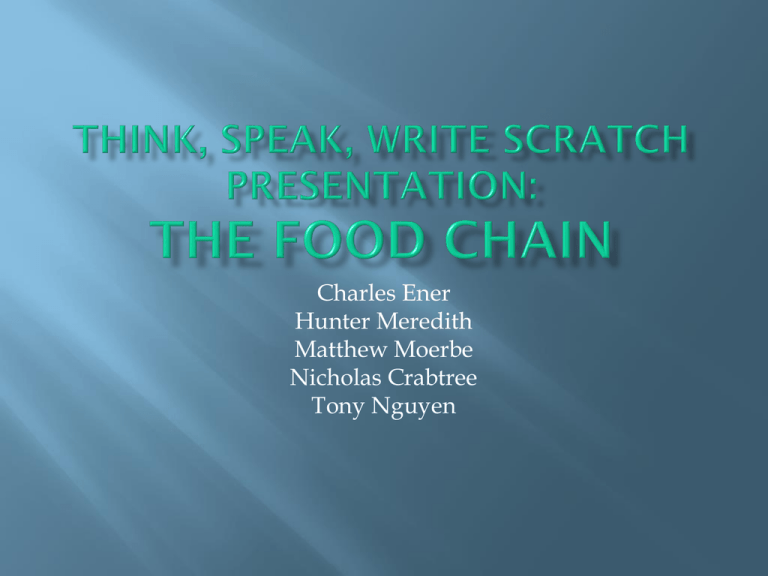
Charles Ener Hunter Meredith Matthew Moerbe Nicholas Crabtree Tony Nguyen A food chain is a term used to show how energy and nutrients flow through nature. The energy and nutrients pass from an organism when it is eaten or otherwise taken by another organism. Every different environment holds its own series of different food chains, many of which will overlap with each other at some point. A rainforest for example, will have a large number of food chains, each involving many different animals. The food chains in the Arctic Circle, on the other hand, will be shorter, and less in number. And of course, they will involve different animals. The Producers make up the first part of any food chain. Producers are generally plants. To some extent, everything in the food chain gets energy from a Producer. Producers create their own energy through the process of photosynthesis, using only soil and sunlight. Producers will be eaten at some point by herbivores or omnivores. These animals –known as Consumers- will then gain a portion of their energy. There are two kinds of Consumers: Primary Consumers Secondary Consumers These are the first of the Consumers. Primary Consumers are either herbivores or omnivores. As animals, they are incapable of producing their own energy in the way that plants do. So, they eat plants. Part of the energy that is absorbed from the plants travels on to fuel the activities of the animal that ate them. The rest is lost. The Primary Consumers must keep eating plants to gain energy. A mouse (Consumer) will eat grass (Producer) in order to keep up its energy. These animals may not necessarily be present in a given food chain. These animals are either omnivores or carnivores. They gain their energy by feeding off of the Primary Consumers. Secondary Consumers will hunt consumers, or scavenge ones that have recently died for sustenance. The amount of energy they receive from their prey is slightly less than what the prey had gotten from the plants it had eaten. There may be still more Consumers in a food chain, which will feed off of the Secondary Consumers A snake (Secondary Consumer) will eat a mouse (Primary Consumer) for energy. But sometimes even Secondary Consumers can become prey. This is the case with this snake becoming food for this predatory bird. The Decomposers are the last official step in the food chain. Decomposers can not typically be seen by the naked eye. They consist of tiny, microscopic bacteria and fungi. Decomposers have a disgusting, but incredibly vital role in the food chain. When a Consumer dies, the bacteria eat away at the remains of its body. The remains are disposed of, and the bacteria move on. But, the nutrients they eat are released back into the soil. This allows the Producers (plants) to take the nutrients in through their roots. With this, the entire food chain starts over again from the first step. This means that the nutrients and potential for energy always remain in the environment for organisms to partake in. Food chains are an essential part of our ecosystem. They ensure that energy and nutrients are properly distributed throughout the environment. Things remain organized so that nothing goes hungry. 1) What is a food chain? 2) What is a Producer’s role in the food chain? 3) What kind of organism is a Producer? 4) How many varieties of Consumers are there? 5) What is a Consumer’s role in the food chain? 6) What is the diet of a Primary Consumer? 7) What is the diet of a Secondary Consumer? 8) What is a Decomposer’s role in the food chain? 9) Generally, what kind of organism is a Decomposer? 10) What is the overall purpose of a food chain?
